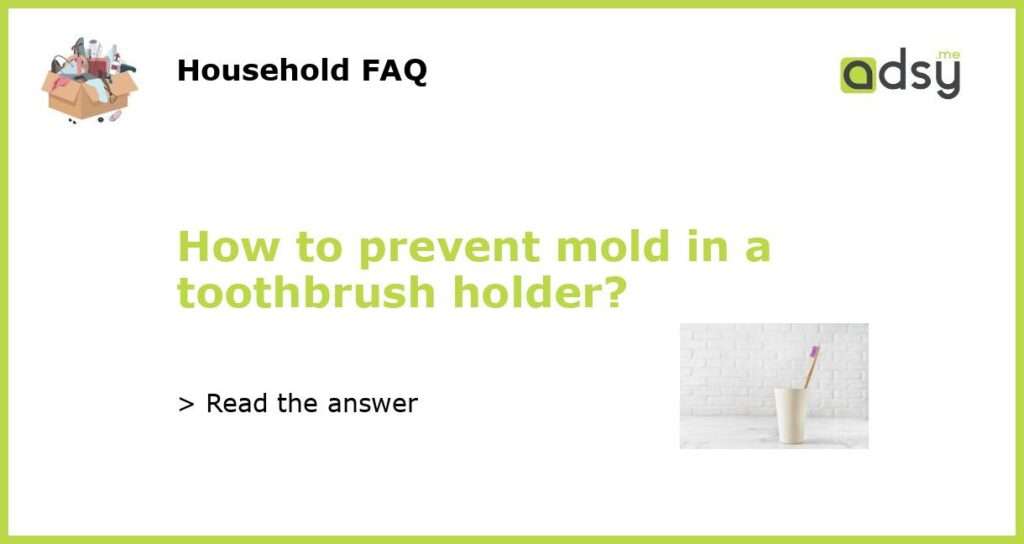Keep it clean and dry
The key to preventing mold in a toothbrush holder is to keep it clean and dry. After each use, make sure to thoroughly rinse your toothbrush holder with warm water to remove any toothpaste residue or bacteria. Use a soft brush or sponge to scrub away any stubborn buildup. Once clean, shake out any excess water and allow the holder to air dry completely before placing your toothbrush back in.
Use a disinfectant solution
Regularly disinfecting your toothbrush holder can help prevent the growth of mold and bacteria. You can use a simple solution of water and bleach to effectively kill any germs. Mix one part bleach with ten parts water and soak your toothbrush holder in the solution for a few minutes. Rinse thoroughly and allow it to air dry. Alternatively, you can use an antibacterial cleaning solution or wipes specifically designed for toothbrush holders.
Choose a holder with drainage
When selecting a toothbrush holder, look for one that has drainage holes or slots. Proper drainage is essential to prevent moisture buildup and mold growth. Choose a holder that allows excess water to drip out and air to circulate around your toothbrush. This will help keep the holder dry and mold-free.
Replace your holder regularly
Over time, toothbrush holders can become worn and develop cracks or crevices that are difficult to clean. Mold can easily grow in these hard-to-reach areas, so it’s important to replace your toothbrush holder regularly. Consider replacing it every three to six months or whenever you notice signs of mold or deterioration.
Store toothbrushes separately
To further prevent mold and bacteria growth, it’s best to store your toothbrushes separately from each other. Cross-contamination can occur when toothbrushes come into contact with each other, especially if they are stored in a damp, moldy holder. Consider using individual toothbrush holders or toothbrush stands to keep each toothbrush separate and hygienic.






